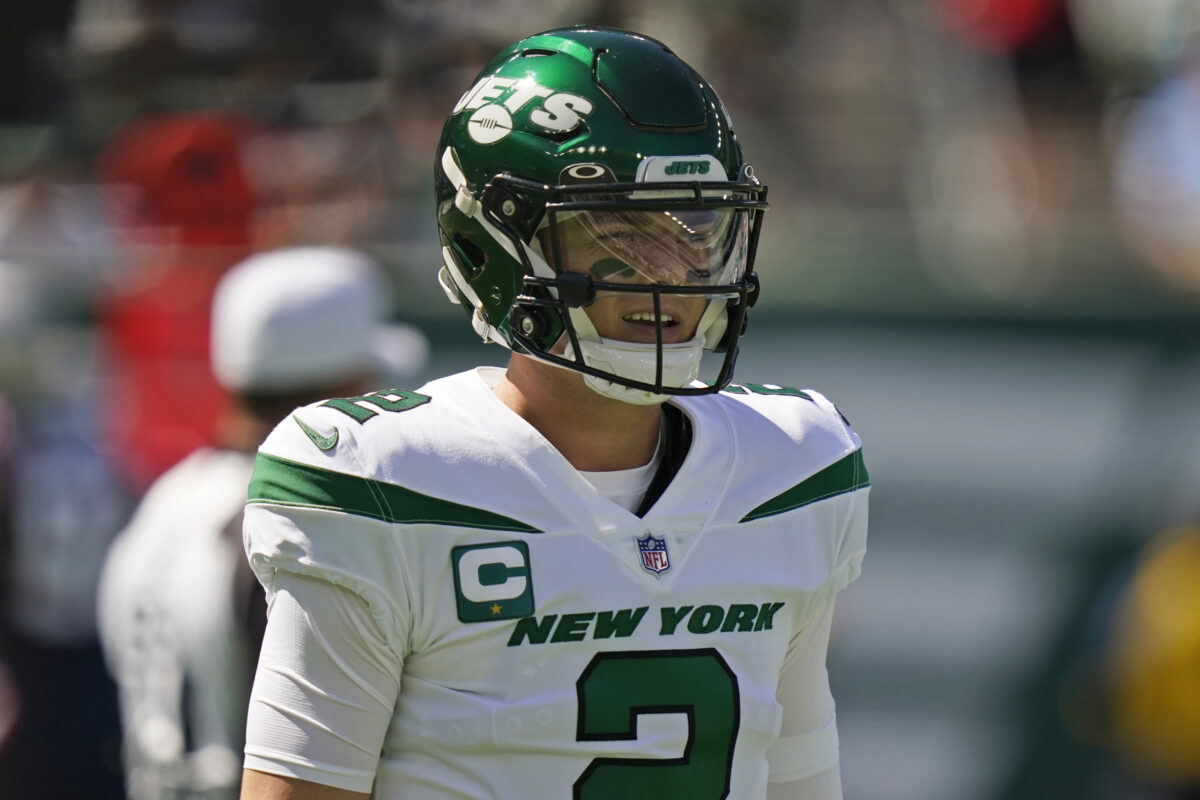Through his short NFL career, Broncos quarterback Drew Lock has been far more efficient with play-action. Why aren’t his coaches using it more often?
On paper, the Broncos have the look of a team ready to make the playoffs for the first time since 2015. They have a top-shelf defense, and first-round cornerback Patrick Surtain II is already making big plays.
They have a monster running back in second-round pick Javonte Williams. Offensive line coach Mike Munchak has done what he’s done everywhere, which is to bring out the best in his front five. And in the combination of Jerry Jeudy, KJ Hamler, Courtland Sutton, and the underrated Tim Patrick, they have as imposing a receiver group as you’ll find in the NFL.
The only real question the Broncos have is the same question they’ve had since the day Peyton Manning retired, and Manning just went into the Pro Football Hall of Fame after his mandatory five-year wait — who will be Denver’s quarterback, and can that quarterback be any more than league-average at best? It’s been a supremely ugly stretch since Manning hung ’em up, with Trevor Siemian, Paxton Lynch, Brock Osweiler, Case Keenum, and Joe Flacco fulfilling John Elway’s requirements for the position, which seemed to center around height (Keenum excepted) and very little else.
The Broncos selected Drew Lock in the second round of the 2019 draft out of Missouri to try and end this ugly string of placeholders, and through two seasons, the results have been inconclusive at best. Lock has completed 59.1% of his passes for 3,953 yards, 6.6 yards per attempt, 23 touchdowns, and 18 interceptions. Lock has all the athleticism and arm strength you’d want, but his decision-making and field-reading abilities have been suspect.
Which is why the Broncos traded a sixth-round pick to the Panthers for veteran Teddy Bridgewater. Head coach Vic Fangio has said that the competition between Lock and Bridgewater is a push through the preseason, so it was on Lock to make something happen as the starter of Denver’s Saturday preseason opener against the Vikings.
Lock had no issue doing that. There was this 25-yard pass to Hamler with 12:55 left in the first quarter…
…and this 80-yard touchdown pass to Hamler with 6:32 elapsed in the game.
It didn’t hurt Lock’s prospects that nobody on Minnesota’s defense — both cornerback Cameron Dantzler and rookie safety Camryn Bynum got lost in the wash — but this was a pretty throw to an open downfield receiver, and Hamler has the downfield acceleration to take advantage. Lock finished his day completing five of seven passes for 151 yards, two touchdowns, no picks, and a passer rating of 153.3, which is near-perfect.
What do these two big-play throws have in common? Play-action, and this is very important to note. As average as Lock was last season, he was absolute nails when given the advantage of play-action and boot-action.
To add one more statistic: Lock’s passer rating last season with play-action was 112.5; his passer rating without was 64.1. I wasn’t a math major, but that’s a pretty significant difference.
Why the Broncos didn’t use it more often is a mystery. Lock ranked 23rd in the NFL in play-action attempts last season (Buffalo’s Josh Allen led the NFL in the regular season with 198), but there’s clearly something about how play-action forces defenders out of their ideal spacing that makes a massive difference in Lock’s game. And when you have a young quarterback with Lock’s raw gifts and iffy processing results, why not do everything possible to help him out conceptually?
Perhaps offensive coordinator Pat Shurmur will continue to dial up more play-action for Lock in the preseason and beyond, as he did in this game. The results are obvious.

